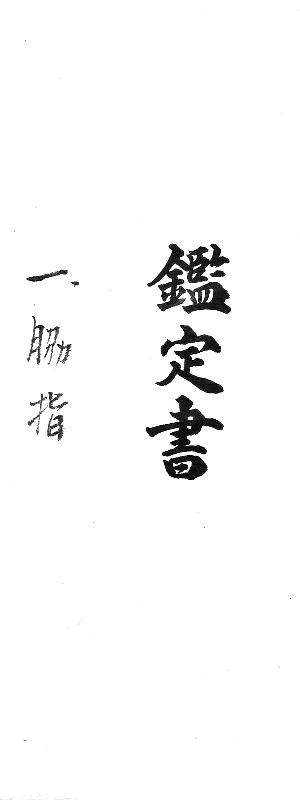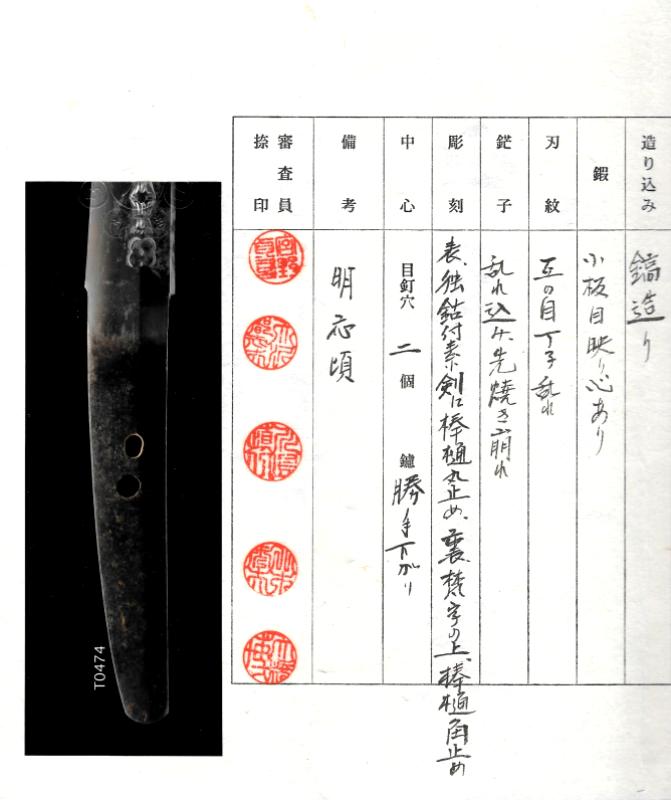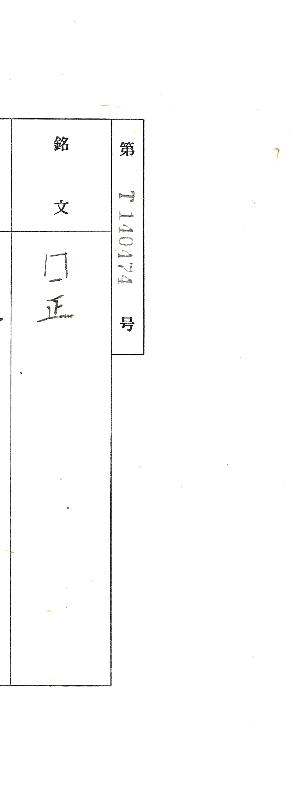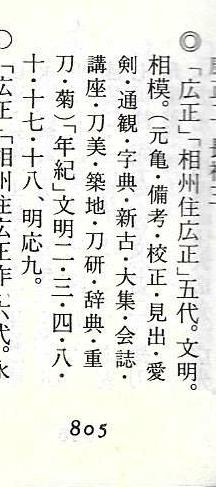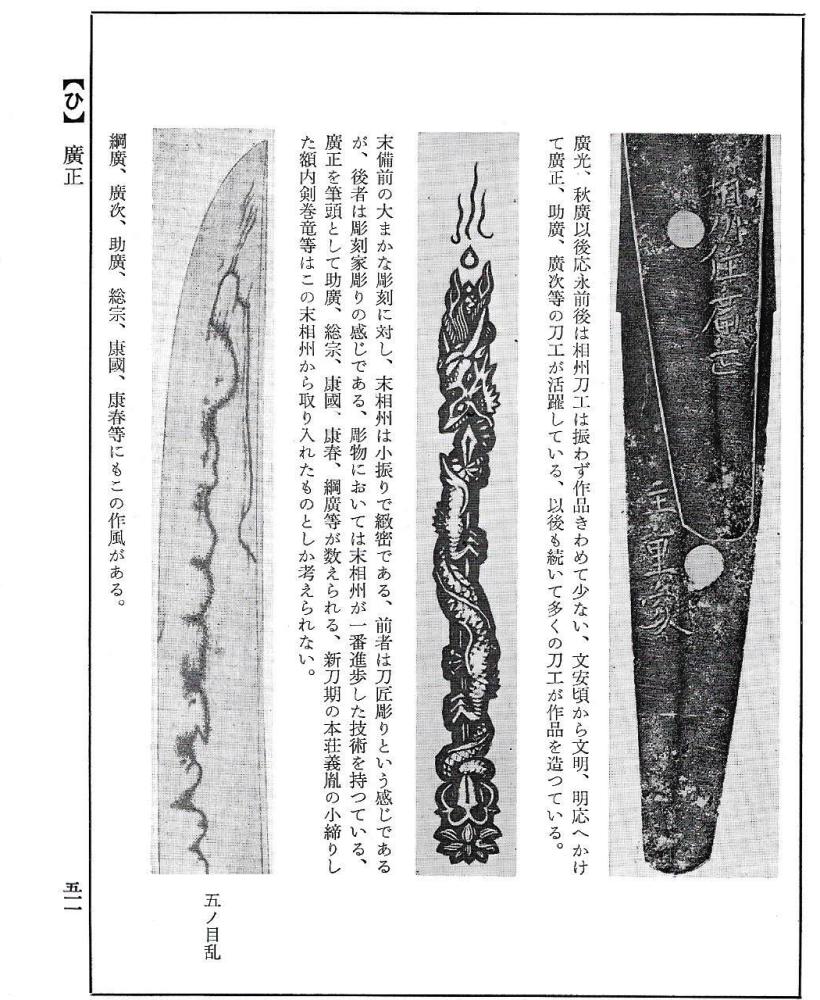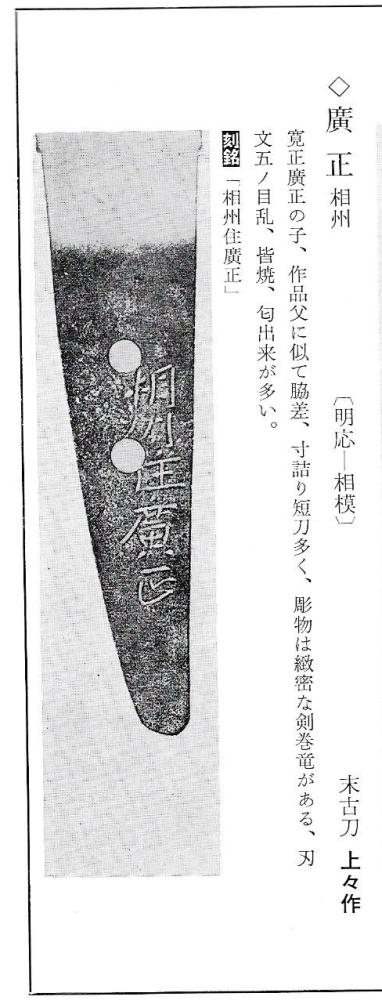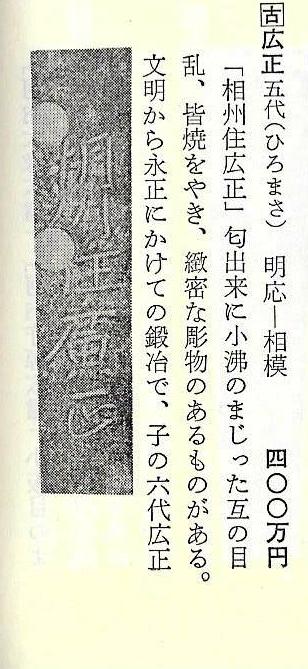In spite of this rapid and sweeping change introduced by Masamune, the Soshu Den itself flared out in a burst of creativity at the end of the Nambokucho period and was briefly lost in the generation that followed Akihiro and Hiromitsu. The first generation Hiromasa came onto the scene in the early Muromachi period and was able to re-establish the Soshu tradition and ongoing success was found by Sukehiro and Hirotsugu soon after.
Hiromasa carries a character from Hiromitsu in his name, and is thought to be a grandson of this smith. Sukehiro, Masahiro, Hirotsugu and Tsunahiro would all be names used by various generations during the Muromachi time, and the common character in their names reflects back to the main line of Soshu going up through Hiromitsu.
Fujishiro considered that there were two generations of Hiromasa and ranked them both as Jo-jo saku for greatly superior craftsmanship. He placed them as working between 1460 and 1492 in the Muromachi period. Dr. Tokuno lists five generations, rating them in order of first to fifth generation: 5.5, 5, 5, 4.5 and 4 million yen which would translate to roughly Jo-jo saku for the first three generations, and Jo-saku for the last two.
The Hiromasa line of smiths is very famous for its horimono, and Fujishiro places them as the top ranked horimono carvers in the late koto period. The style of work of these smiths also embraced everything from suguba to hitatsura, which was the trademark style of the purest Soshu smith Hiromitsu and grand-parent of their line.
In spite of the popularity and effect of the Soshu Den, the works of these smiths were made during times of great warfare and tended to be consumed in the resulting fighting. This combined with the short time period where the Soshu tradition was actively pursued makes Soshu blades relatively rare in the grand scheme of things.
When the koto period came to a close and the Shinto period ushered in, the Soshu kaji were nearly extinct as the power base had long ago moved from their home base of Kamakura. Although the greatest Soshu-style works were now being created by Kunihiro and Umetada Myoju and their students, the main line of Soshu had been handed off and down through Soshu Tsunahiro and was still active. If you were to visit Kamakura today it is possible to find the 24th generation Tsunahiro still at work at his forge making swords.
